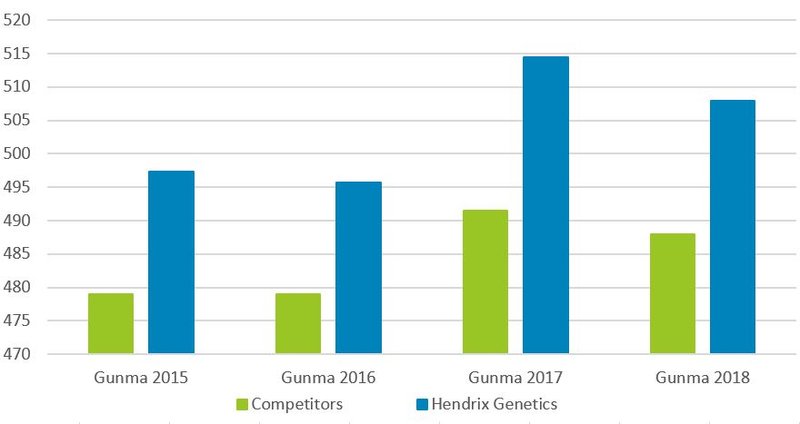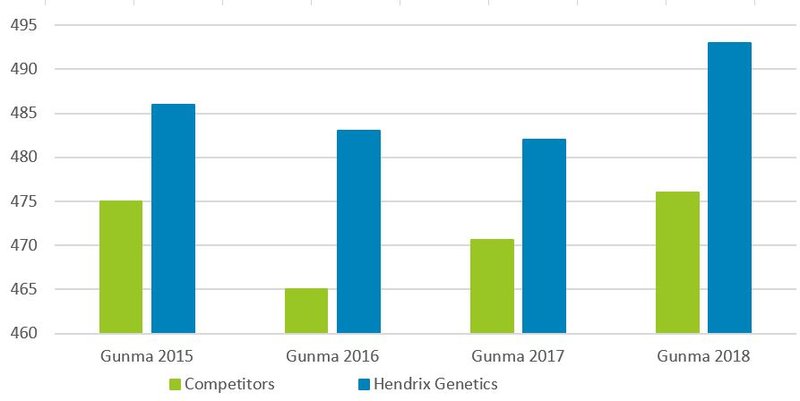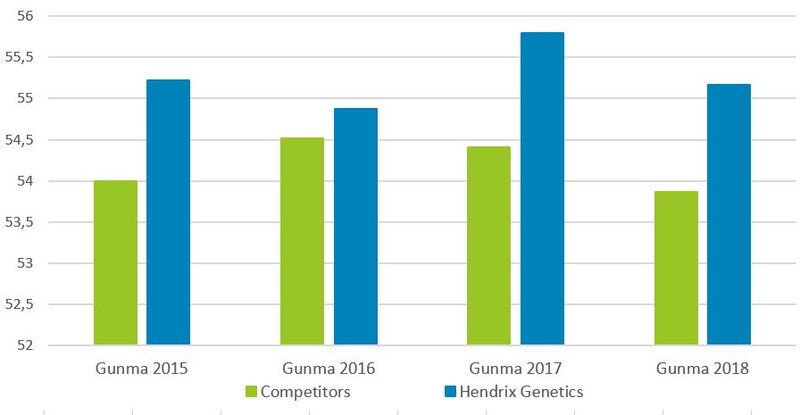
Published on Nov. 3, 2021
Data coming from the field: latest update on RST GUNMA
Data coming from Random Sample Tests (RST) are one of the most objective proof of genetic progress over the years. Earlier this year, we presented the summary of 60 years of Random Sample Testing at the North Carolina Layer and Performance and Management Test. This overview marked the effects of our balanced breeding program in which we focus on sustainability: to improve the number of first quality eggs per hen housed. With this approach we focus highly on sustainability, as more eggs will result in higher egg mass and lower feed conversions, and flocks that stay fit and healthy will have a higher chance to survive and maintain egg laying persistency.
These results are certainly contributing to more sustainable egg production and it’s reduction on the global carbon footprint.
The results of Gunma RST (Japan) are in line with this general tendency. We have gathered the data of 4 years of testing at the Gunma research station; from 2015-2016 to 2018-2019. In the North Carolina test we focused on general tendencies of all layer breeds, here with the Gunma test we were able to adopt a more detailed point of view and have the focus on the results of HG and its competitors. Let’s have a look at some findings.
Over the years, the Gunma results clearly show that the HG breeds (a full overview of the participating breeds is provided at the end) have a higher Hen Day production during the last 4 consecutive years in a row.
Hen Day Production % - all breeds

As expected, next to Hen day Production %, also the number of eggs produced per hen housed is dominated by the HG breeds over the competitor breeds. At Hendrix Genetics we are selecting our layer breeds already for more than 1 decade for 100-week cycles. Next to the ability to produce eggs persistently, a clear focus is on livability. Vital hens that stay alive and in excellent condition are essential to reach the objective of 500 eggs in 100 weeks. By looking at the graphs below (we have differentiated between white and brown egg layer breeds) one can quickly notice the consistent achievements of the HG breeds. During the past 5 test the HG breeds outperformed the competition on the total number of eggs produced per hen housed.
Eggs per Hen Housed % - White breeds

Eggs per Hen Housed % - Brown breeds

More eggs easily result in higher egg mass produced per hen, even when certain breeds have a somewhat smaller egg size profile. In the end more eggs are being produced, and higher egg mass is quickly adding up with every extra egg being produced: a win-win for all. As can be seen from the graph below the overall performance of the HG breeds turns out to be very positive compared to its competitors. During all test better performances related to the average daily egg mass produced is measured for the HG breeds.
Daily egg mass - all breeds

Better egg laying persistency and higher daily egg mass produced requires a higher daily energy requirement. But as more eggs are being produced (resulting in higher egg mass) this higher energy requirement (feed intake) is compensated. It should not be forgotten that higher productivity and higher egg mass produced will result in a higher income for egg producers, as the revenues from the egg sales will compensate the higher energy requirements of the laying hens.
"The data coming from the latest 4 Gunma RST’s clearly show that the efforts and investments done on the breeding programs of Hendrix Genetics are paying off."
Consistent competitive advantage is shown for all economic traits. A well-designed and balanced breeding program, with a dedicated focus on sustainability, clearly pays off in terms of egg production and total egg mass produced for every hen that got housed.

